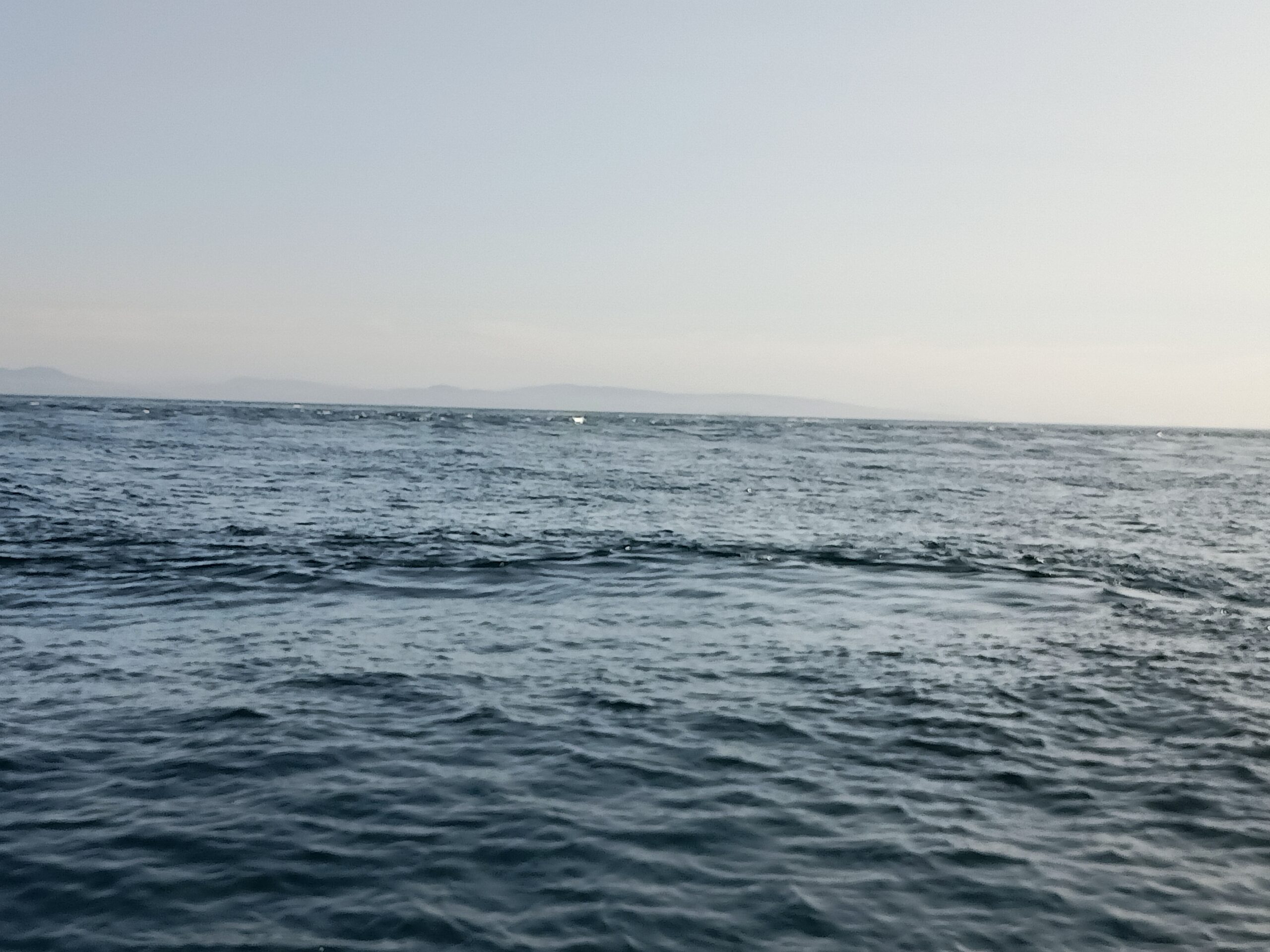
We leave Barbate, look across to Africa, and approach the ‘Pillars of Heracles’ (the Strait of Gibraltar). Below us, the water begins to push, to turn over. Rippling surface water alternates with seemingly oily, bare patches, diameters from 20 to over 100 metres, and in between the ArgoFram, which is being pushed back and forth – Martina looks quite astonished…
I’ve already had experience with currents, ‘whirlpools’ and surprisingly appearing wave banks. And this time, too, a white wall seems to open up in front of us; far in front of us a single wave breaks, and over several hundred metres in length, maybe over two kilometres – how high is it? How will it feel to ride through it? How to proceed, what to do?
I just head straight for it – at my speed, this wall is approaching quickly anyway… I respectfully reduce my speed, examine its course, and decide to break through. Vertically. – What at the beginning of my experiences in this regard, especially before Northern Ireland and in the passages before Wales, was done rather accidentally and intuitively (and succeeded with luck), I now master with a certain serenity. Or at least I pretend to be, since I have a guest on board.
The wall wasn’t a wall after all, more like a thicket puffing up, maybe a metre high, looking fearful. The ArgoFram glides through this ‘wave’ like through butter – how jumpy am I?!
Once overcome, the water pulls and pushes us through this strait between Europe and Africa. The power of my engines keeps the ArgoFram on course even now, as if nothing were wrong – in stark contrast to an oncoming sailboat whose sails are dangling without pressure and which is visibly fighting the powerful current with its (rather weak) engine. I wouldn’t want to sit in it now.
At this sight, I can easily imagine the challenges the Phoenician and Greek sail-rowers faced three thousand years ago in order to sail from the Mediterranean into the Atlantic, depending on the wind and current conditions. Because please do not forget: Every second, around one million cubic metres of water flow from the Atlantic into the Mediterranean at the surface. That corresponds to a water cube of 100 m edge length, per second! Multiplied by one tonne of weight per cubic metre, 1 billion kg of water presses through ‘the Pillars of Heracles’ at the water surface per second – these are truly powerful conditions to master. (In the deeper layers of the Strait of Gibraltar, more saline water flows back from the Mediterranean into the Atlantic; net, about 70,000 m3 of water per second flows from the Atlantic into the Mediterranean, which is 240 times more than the inflow of all rivers flowing into the Mediterranean). – It was only thanks to close observation of the deeper counter-current and the ingenious idea of using drifting anchors like a kind of underwater sail that ships were able to advance from the Mediterranean into the Atlantic in ancient times!
But I’m not sailing out into the Atlantic now, I’m sailing into the Mediterranean, that’s relatively easy. It is rather my sensors, or my anxiety, that detect the movements on the water and sense the play of forces under the ship, and trigger this queasy feeling.
Soon the Rock of Gibraltar appears. Actually, it would be cheap to refuel here, but the Corona-related entry procedure gets on my nerves, so we just rush past it and continue towards Malaga.
The big city doesn’t appeal to us, so we land shortly before it in Fuengirola: moderately maintained, but busy harbour facilities. Lots of boats. Then children’s bouncy castles and Spanish families enjoying their holiday deep into the night…. That’s all we care about.